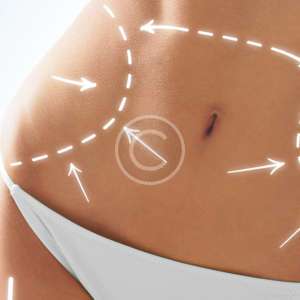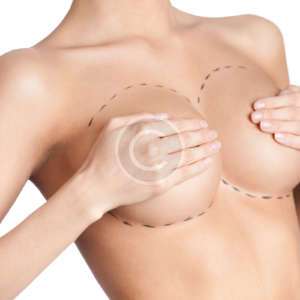
Blepharoplasty is a surgical procedure to improve the appearance of the eyelids, to remove the tired look due to the heavy eyelidsand to rejuvenate the area surrounding your eyes.
Surgery can be performed on the upper lids, lower lids or both, under local or general anesthesia.
What eyelid surgery can treat ?
- Loose or sagging skin that creates folds or disturbs the natural contour of the upper eyelid, sometimes impairing vision
- Fatty deposits that appear as puffiness in the eyelids
- Bags under the eyes
- Drooping lower eyelids that reveal white below the iris
- Excess skin and fine wrinkles of the lower eyelid
You are a good candidate for blepharoplasty if :
- You have excess fatty deposits that cause puffiness in the upper eyelids
- You have loose or sagging skin that causes folds or affects the natural contour of the upper eyelid, sometimes impairing vision.
- You have excess skin and fine wrinkles of the lower eyelid, bags under the eyes, or droopiness of the lower eyelids.
- Your general health is good.
Consultation
Be prepared to provide access to your full medical history. Your cosmetic surgeon will need to be aware of any medical conditions you may have in order to clear you for eyelid surgery. If you suffer from high blood pressure, heart disease, or bleeding disorders among other conditions, you need to give full disclosure to your surgeon so he can determine if blepharoplasty is an option for you.
Medical conditions, previous cosmetic procedures, refractive surgeries such as LASIK, and previous eyelid surgeries can cause complications, so it’s crucial your surgeon is made aware of any of these conditions.
Procedure
The upper eyelid can be corrected through an incision within the natural crease on the eyelid. This allows for removal or repositioning of fat deposits, tightening of muscles and removal of excess skin.
Conditions of the lower eyelid may be corrected with an incision just below the lower lash line. Through this incision, excess skin in the lower eyelid is removed. Again, the excess fat can be repositioned or removed.
A transconjunctival incision, created on the inside of the lower eyelid, is an alternate technique to correct lower eyelid conditions and redistribute or remove excess fat. In this technique, no skin is removed.
Eyelid incisions typically are closed with sutures or skin. Sutures are removed within 5 days. The incision lines for eyelid surgery are designed so the resultant scars will be well concealed within the natural structures of the eyelid region.
Risks
Is it safe ?
As with any surgical procedure, there is some degree of risk. Complications and bad results from blepharoplasty are rare, but sometimes they do occur. Problems that can occur include:
However rare they might be, it is important to be aware of potential complications before you decide to have the surgery. Most patients have a very satisfactory result following the blepharoplasty procedure.
Is it painful ?
Eyelid surgery is among the least painful cosmetic procedures
You may also have a small amount of bruising or discoloration. Luckily, those fade within a matter of days.
Any minor pain can be handled with over-the-counter pain relievers like ibuprofen or Tylenol. Cold compresses help with swelling and discomfort.
recovery
Initial healing may include some swelling, bruising, irritation, dry eyes and discomfort that can be controlled with medication, cold compresses and ointment. Irritation at the incision sites is also possible.Patients usually have a short recovery time after blepharoplasty. Although bruising and swelling is usually worse on the day after surgery, they quickly begin to disappear. During the first 48 hours, the use of cool compresses can greatly reduce bruising and swelling around the eyes and face. Light activity such as walking will also help speed healing. Thin bandages are usually placed over the incision sites and removed in several days, while the stitches can remain in the skin for about a week. Sometimes self-absorbing stitches are used that do not require removal.
Most people return to normal activities after seven to 10 days following blepharoplasty. By two weeks after eyelid surgery, the majority of the bruising and swelling will resolve.
You will be given specific instructions that may include how to care for your eyes, medications to apply or take orally to aid healing and reduce the potential for infection, specific concerns to look for at the surgical site or in your overall health and when to follow-up with your plastic surgeon.
results
The results of this procedure are usually among the most durable found in aesthetic surgery.Around six weeks, you will start to see the final result of your eyelid surgery. Mild residual swelling may still be present as the delicate tissues around your eyes continue to adjust, but your eyes will be noticeably refreshed, alert and younger-looking. Incision lines can remain slightly pink for six months or more. Many people express satisfaction with the results of blepharoplasty, such as a more rested and youthful appearance and more self-confidence.
Once the fatty pads removed or repositioned, they do not in general return, so this is a permanent effect. On the other hand, skin does continue to age, and the excess folds of the eyelids can, over time, recur. However, a second operation is rarely envisaged within twelve years.
Things to keep in mind
- Eyelid surgery and Crow’s feet
While a blepharoplasty can help improve your appearance in significant ways, it is important to note that it will not eliminate crow’s feet, which are the wrinkles that form at the corners of your eyes. A different procedure is necessary in order to correct those types of wrinkles - The Results Will Likely Last for the Rest of Your Life
Most cosmetic procedures have a shelf life, but that is not necessarily the case with eyelid surgery. In fact, the majority of patients enjoy long-lasting results. Those who need a touch-up can go with Botox the second time around. With that, a simple injection fills out the eyebrow area, making the eyes look youthful again.







